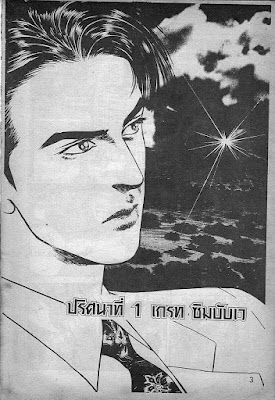Manga (漫画 Manga) are comics created in Japan or by creators in the Japanese language, conforming to a style developed in Japan in the late 19th century.[1] They have a long and complex pre-history in earlier Japanese art.[2] The term manga (kanji: 漫画; hiragana: まんが; katakana: マンガ; About this sound listen (help·info); English: /ˈmæŋɡə/ or /ˈmɑːŋɡə/) in Japan is a word used to refer to both comics and cartooning. "Manga" as a term used outside Japan refers to comics originally published in Japan.[3] In Japan, people of all ages read manga. The medium includes works in a broad range of genres: action-adventure, business and commerce, comedy, detective, historical drama, horror, mystery, romance, science fiction and fantasy, sexuality, sports and games, and suspense, among others.[4][5] Many manga are translated into other languages.[6] Since the 1950s, manga has steadily become a major part of the Japanese publishing industry,[7] representing a ¥406 billion market in Japan in 2007 (approximately $3.6 billion) and ¥420 billion (approximately $5.5 billion) in 2009.[8] Manga have also gained a significant worldwide audience.[9] In Europe and the Middle East the market was worth $250 million in 2012.[10] In 2008, in the U.S. and Canada, the manga market was valued at $175 million. Manga represent 38% of the French comics market, nearly 260 million Euros which is equivalent to approximately ten times to that of the United States.[11][12] Manga stories are typically printed in black-and-white,[13] although some full-color manga exist (e.g., Colorful). In Japan, manga are usually serialized in large manga magazines, often containing many stories, each presented in a single episode to be continued in the next issue. If the series is successful, collected chapters may be republished in tankōbon volumes, frequently but not exclusively, paperback books.[14] A manga artist (mangaka in Japanese) typically works with a few assistants in a small studio and is associated with a c
โหลดอ่านการ์ตูน PDF Zero
+ ตอบกลับกระทู้
สรุปผลการค้นหา 1 ถึง 1 จากทั้งหมด 1
กระทู้: Zero ล่าจารชน
-
02-10-2018 08:04 AM #1Senior Member


- สมัครเมื่อ
- Jun 2013
- โพสต์
- 364
- Thanks
- 0
- Thanked 17 Times in 17 Posts
Zero ล่าจารชน
ดาวน์โหลดเกม pcการจีบสาวโหลดแอนตี้ไวรัสPOWER BANK ยี่ห้อไหนดี
mu originดาวน์โหลด WINDOWS ฟรีเล่นเกม Pokemon Leaf GreenSmart Home คือสูตรคณิตศาสตร์อยากสูงขึ้นรีวิว game computer Dragon Ball Xenoverse 2โหลดเกมมือถือandroid.ดาวน์โหลดโปรแกรมตัวเต็ม FULLสุ่มรหัสหมายเลขบัตรโหลดอ่านการ์ตูน PDFชุดเสื้อแฟชั่นผู้หญิง
ข้อมูลกระทู้
Users Browsing this Thread
ในขณะนี้มี 1 ท่านดูกระทู้อยู่. (0 สมาชิกและ 1 ผู้เยี่ยมชม)






 อ้างอิงข้อความ
อ้างอิงข้อความ
